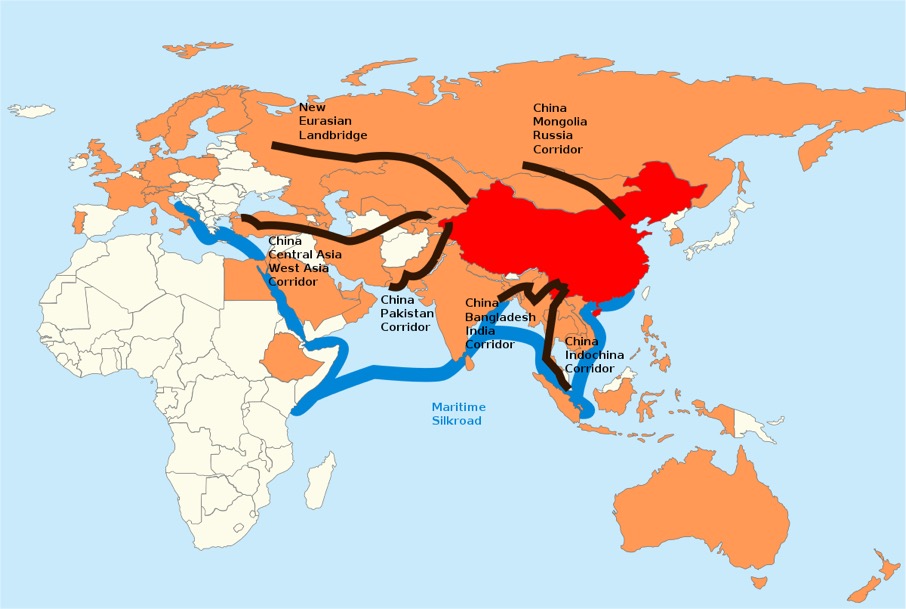Matrix and The Belt and Road (Part 1)
The Belt and Road
The Belt and Road Initiative (or B&R) is short for the Silk Road Economic Belt and the 21st Century Maritime Silk Road. Upholding principles of political trust, economic inte-gration, cultural exchange as well as common interests, common goals and mutual commitment, the initiative aims to build a platform of multilateral cooperation between China and countries along the Ancient Silk Road.
The Belt and Road spans across Eurasia, connecting the vibrant East Asian economy with the more developed European economy linking many developing economies in between. The Silk Road Economic Belt consists of three routes: 1. China—Central Asia—Russia—Baltic Sea; 2. China—Central Asia—West Asia—Persian Bay—Mediterranean; 3. China—Southeast Asia—India Ocean. The 21st Century Maritime Silk Road consists of two routes: 1. China’s eastern coast—South China Sea—Indian Ocean—Europe; 2. China’s eastern coast—South China Sea—South Pacific.
The Belt and Road Initiative will link major cities on key inland trading routes, building multi-national economic corridors that connect 1. China, Mongolia and Russia; 2. China, Central and West Asia; and 3. China and the Indochinese Peninsula. On sea, it will cre-ate two economic corridors connecting 1. China and Pakistan and 2. China, Bangladesh, India and Myanmar, bringing closer the relations and economic ties of countries along its path.

Picture: The Belt and Road Initiative Overview
By Jan. 30th, 2021, China had secured the participation of 171 countries and organiza-tions in the Belt and Road Initiative through 205 cooperation agreements.
The Significance of the Belt and Road
Fueling China’s Next Round of Growth
The Belt and Road Initiative is an ingenious plan for the economic locomotive of the world, China, to leverage its advantage in manufacturing capacity, technology, capital, expertise and advanced industrial models for international influence and market share. China will take this opportunity to open up to the world and carry out dialogues with countries along the Belt and Road in an effort to build multilateral global partnerships for the long-lasting economic growth of the world.
Rebalancing Globalization
The Belt and Road will drive the growth of China’s western provinces, as well as Mon-golia and Central Asian countries, thus integrating these inland countries into globaliza-tion. As China exports its manufacturing capacity and leading industries westward, countries along the Belt and Road stand to benefit. Historically, Central Asian countries have only served as the middlemen for the commercial and cultural exchange between the East and the West. The Belt and Road Initiative will raise them from the state of un-derdevelopment and help them narrow the poverty gap caused by globalization. As countries in these regions catch up in economic development, the world will become a more peaceful, prosperous and harmonious place.
Creating New Regional Partnerships
An all-encompassing strategic initiative, the Belt and Road will surpass the Marshall Plan by virtue of multilateral dialogues, common goals and shared interests. It will de-fine the 21st-century way of international cooperation.